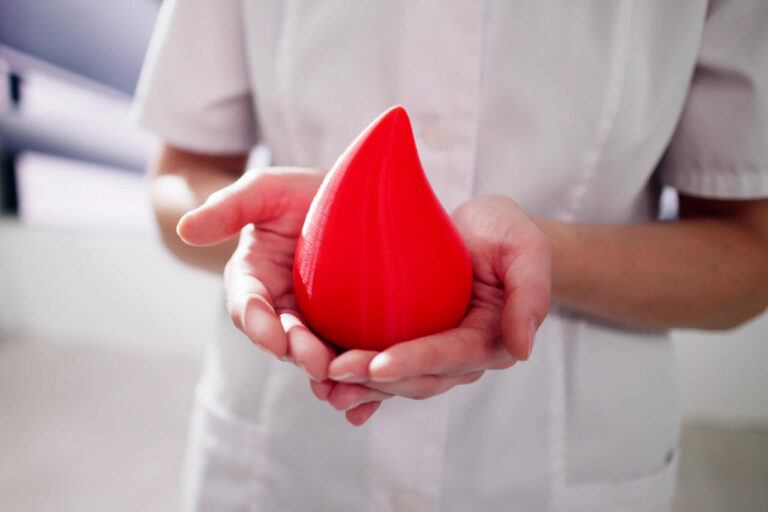
Bumps, bruises, scrapes, and cuts are a normal part of everyday life. However, for people living with hemophilia, bleeding injuries can be a serious concern. Hemophilia is estimated to affect about one in 5,000 male births in the United States.
Women can also be affected by hemophilia, either as carriers who may have mild symptoms or, in rare cases, with symptoms as severe as male patients. Thanks to ongoing research and advances in both factor replacement and non-factor therapies, treatment has become much more reliable and effective, allowing most people with hemophilia to live active, full lives.
Speak to a Specialist
About Copay AssistanceWhat Is Hemophilia?
Hemophilia is a rare inherited bleeding disorder. People with hemophilia have low levels or a complete absence of certain clotting factors—proteins in the blood that help form clots. Without enough clotting factor, bleeding can last longer than normal, both on the surface (such as cuts) and inside the body (such as into joints or muscles). In other words, their bodies take longer to stop a bleed because the blood cannot clot properly.
People with mild hemophilia may bleed longer than usual after surgery, dental work, or injuries. Those with moderate to severe hemophilia are at higher risk for spontaneous (unprovoked) bleeding, especially into joints and muscles. These internal bleeds can cause significant pain, swelling, and, over time, joint damage if not treated quickly. Internal bleeds can also damage your organs and tissues, potentially leading to life-threatening complications.
The two most common types of hemophilia are:
- Hemophilia A: Caused by low levels of clotting factor VIII.
- Hemophilia B: Caused by low levels of clotting factor IX.
All humans have two sex chromosomes, one inherited from each parent. Women have XX chromosomes and men have XY chromosomes. As both hemophilia A and hemophilia B are X-linked (passed on through the X chromosome), any male that inherits the hemophilia gene is more likely to exhibit symptoms of hemophilia. Women can also have low clotting factor levels and experience symptoms similar to men with mild hemophilia. However, as they usually inherit only one hemophilia gene on their first X chromosome and a normal gene on their second X chromosome, their bleeding symptoms tend to be less severe. Most women who inherit the hemophilia gene are silent carriers, exhibiting no symptoms but with the ability to pass the defective gene onto their children.
Diagnosing Hemophilia

Because hemophilia is a genetic condition, many patients are diagnosed in early childhood, often within the first few months to a few years of life. Some babies are diagnosed soon after birth if there is a known family history. However, about one-third of babies born with the disease have no known family history, and the condition is discovered after unusual bleeding or bruising is noticed.
Contrary to popular belief, hemophilia can affect both men and women, although it is more common in men. Women may be carriers of the hemophilia gene and can also have low clotting factor levels themselves. When this happens, they may experience heavy menstrual bleeding, easy bruising, or other bleeding symptoms similar to mild hemophilia.
It’s important for parents with a family history of hemophilia to inform their obstetrician and pediatrician. This allows the care team to plan a safe delivery, avoid unnecessary invasive procedures, and arrange early testing if symptoms appear. Women with a family history of hemophilia may also want to speak with a hematologist or genetic counselor about carrier testing. If they notice heavy bleeding, easy bruising, or prolonged bleeding after procedures, they should ask about testing for hemophilia or other bleeding disorders.
Get Financial Assistance
Living With Hemophilia
People with hemophilia need to take extra care to prevent bleeds by avoiding unnecessary injuries and staying healthy. Maintaining a healthy weight through balanced nutrition and regular exercise helps protect the joints and strengthen the muscles that support them. Many people with the disease can safely participate in low-impact or non-contact activities—such as walking, swimming, cycling, or yoga—while contact sports with a high risk of injuries (like boxing or tackle football) are generally discouraged unless carefully managed with the care team.
Part of living with hemophilia includes managing the condition with proper treatment and regular follow-up with specialized doctors and hemophilia treatment centers. Traditional factor replacement therapy involves infusing clotting factor (factor VIII or IX) into a vein to prevent bleeds or treat them when they occur.
- Prophylaxis (preventive treatment): Factor VIII or IX or other preventive therapies are given regularly—often several times per week or as prescribed—to keep clotting factor levels high enough to reduce spontaneous bleeds and protect joints.
- On-demand treatment: Additional infusions or medications are used to stop a bleed once it starts.
In addition to traditional factor infusions, newer non-factor therapies (Hympavzi, Qfitlia), and long-acting factor products (Altuviio, Adynovate) are available for some types of hemophilia. These treatments can be given less often (for example, weekly or monthly) and can significantly reduce the number of bleeds. Your hematologist can help determine which options are best based on your type and severity of hemophilia, lifestyle, and treatment goals.
With modern treatment and healthy lifestyle choices, most people with hemophilia can expect a near-normal life expectancy. Quick treatment of bleeding episodes—especially internal bleeds into joints, muscles, or the head—is essential. Partnering with a hematologist and a hemophilia treatment center (HTC) can help patients create an individualized care plan, learn how to recognize early signs of bleeding, and access the latest therapies.
Is There a Cure for Hemophilia?
There is currently no widely available, permanent cure for hemophilia. However, significant progress has been made with gene therapy, which aims to deliver a working copy of the gene responsible for producing clotting factors. Some people who receive gene therapy may achieve sustained higher clotting factor levels and fewer bleeds, but long-term effects are still being studied, and not everyone is eligible.
In rare situations, a liver transplant (for other medical reasons) has corrected hemophilia because clotting factors are produced in the liver. However, liver transplant is a major, high-risk procedure and is not considered a standard or recommended cure for hemophilia by itself.
Get Copay Assistance Now
For now, preventive and on-demand treatments—such as factor replacement, non-factor therapies, and comprehensive care at an HTC—remain the most reliable ways to manage hemophilia.
When To Seek Emergency Care
Some bleeds can be life-threatening and require immediate medical attention. Call emergency services or go to the nearest emergency department right away if you experience:
- A head injury, severe headache, confusion, vision changes, or vomiting
- Sudden severe back, neck, or abdominal pain
- Difficulty breathing or chest pain
- Loss of movement or feeling in an arm or leg
Always let healthcare providers know that you have hemophilia and, if possible, carry an emergency card or wear a medical ID that lists your diagnosis and usual treatment.
Finding Support
Living with a chronic condition like hemophilia can be emotionally and financially challenging. Support can come from:
- Hemophilia treatment centers (HTCs): Provide coordinated care, education, and access to social workers and physical therapists.
- Patient support groups: Connecting with others who have hemophilia or care for someone with hemophilia can reduce feelings of isolation.
- Educational resources and advocacy organizations: These groups can help you stay informed about new treatments, insurance coverage options, and patient assistance programs.
If you are living with hemophilia, managing your health is essential—but you are not alone. By staying connected with your care team, following your treatment plan, and making healthy lifestyle choices, you can reduce bleeds, protect your joints, and live a full, active life.













